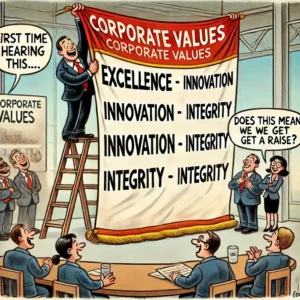
Seasonal Sales Strategy: Make the Most of Spring
Spring is a strategic time to boost your business. Discover how to align your sales efforts with seasonal cycles and turn the transition into a growth driver.
By Caroline Alié – November 25, 2024

In 2024, customer expectations are evolving at an unprecedented pace. More than ever, they seek personalized experiences, authentic interactions, and solutions perfectly aligned with their needs. For B2B companies, this transformation is both a challenge and a unique opportunity.
At Finelis, we firmly believe that a truly customer-centric strategy has become essential to thrive in an increasingly competitive environment. Adopting a customer-centric approach is not just about meeting current expectations: it’s a way to stand out, build lasting relationships, and transform your customers into genuine brand ambassadors.
In this article, we explore why this strategy is critical in 2024 and, more importantly, how to implement it effectively to maximize your commercial results while meeting the new demands of consumers.
Customer expectations are constantly evolving, driven by a digitized environment, increased competition, and a growing demand for personalization. In 2024, three major trends are shaping these expectations: the rise of personalization, the importance of user experience (UX), and an increased demand for transparency and added value. Let’s break these down.
Today’s customers are no longer satisfied with standard products or services. They seek tailored experiences that meet their specific needs. This manifests in:
This rise in personalization is no longer a luxury; it has become a fundamental expectation. Companies that can provide solutions perfectly aligned with their customers’ preferences gain a significant competitive advantage.
In 2024, user experience (UX) has become a critical factor for differentiation. Customers now demand interactions that are:
Good UX is not just about an aesthetically pleasing interface; it directly impacts purchase decisions and customer loyalty. A complex website or frustrating experience can deter a customer, even if the product or service is of high quality.
Consumers in 2024 expect more than just products or services—they seek a relationship built on trust and added value. This involves:
By integrating these expectations, companies can not only attract customers but also build long-lasting relationships based on trust.
In 2024, understanding these expectations is not merely about adapting—it’s a strategic necessity. B2B companies that put their customers at the center of their commercial strategy don’t just meet current needs; they set the foundation for future success.
Adopting a customer-centric strategy goes beyond meeting customer expectations; it’s a true performance driver for B2B companies. By placing the customer at the center of every decision, businesses strengthen their market position, enhance efficiency, and build lasting relationships.
When a business puts its customers first, it creates a long-term relationship of trust. This approach helps to:
Satisfied and loyal customers not only return but also recommend your products or services to others, creating a virtuous cycle of growth.
In an environment where businesses compete fiercely for customer attention, a customer-centric strategy becomes a powerful competitive lever.
This differentiation is especially crucial in sectors where products and services are highly similar.
A customer-centric strategy benefits not only customers but also optimizes commercial outcomes.
By aligning commercial actions with customer expectations, businesses increase their ROI and operate more efficiently.
Satisfied customers don’t just remain loyal; they become true brand ambassadors for your business.
A satisfied customer naturally shares their positive experiences, attracting new prospects to your business. This organic advocacy builds credibility and enhances your reach.
Strong relationships with your customers foster trust among their peers, further strengthening your reputation and expanding your client base.
These ambassadors contribute to your company’s organic growth, solidifying its image and creating a ripple effect of positive engagement.
In summary, a customer-centric strategy delivers three key benefits:
This approach is essential for companies looking not only to adapt to evolving expectations but also to stay ahead of the curve.
Implementing a truly customer-focused strategy requires a structured approach, combining modern technologies, internal reorganization, and results tracking. Here’s how to integrate this framework into your business.
Technology is crucial for adopting a customer-centric strategy, as it allows you to collect and analyze data to better understand and anticipate customer needs.
To successfully transition to a customer-centric strategy, it’s essential to revisit your internal processes and engage all employees in this effort.
This cross-functional approach ensures that every customer touchpoint reflects a consistent and personalized experience.
Implementing a customer-centric strategy must be measurable to assess its effectiveness and make adjustments as needed. Key indicators include:
Tracking these KPIs ensures your efforts align with customer expectations and foster continuous improvement.
By adopting a structured customer-centric strategy based on efficient tools, trained teams, and relevant metrics, your company can meet the expectations of 2024 while building sustainable growth. At Finelis, we support you in this transformation with tailored solutions and expertise. Learn how to leverage our tools and methods on our site: Finelis – Dynamic CRM.
At Finelis, we have developed a unique expertise in supporting B2B companies as they adopt a truly customer-centric strategy. Through a structured approach, effective tools, and personalized support, we help our clients place their customers at the center of their commercial strategy, achieving measurable and sustainable results.
With extensive experience, Finelis offers tailored solutions that address the specific needs of B2B businesses by incorporating the most effective tools and methods to:
This expertise is reflected in our unique Sales-as-a-Service model, which combines commercial outsourcing with strategic reinforcement, as explained by our CEO, Jean-Charles Spanelis, during his interview on BFM TV: Watch the BFM TV interview.
To support our clients effectively, we use modern tools and provide adaptable solutions:
Discover all our solutions here: Finelis Solutions.
Companies that have adopted a customer-centric strategy with Finelis have achieved significant results:
Our client testimonials highlight the positive impact of our approach. For instance, an industrial SME supported by Finelis increased its conversion rate by 25% in less than a year while improving customer satisfaction.
At Finelis, we believe every company can transform its commercial approach by placing customers at the heart of its strategy.
Ready to take your model to the next level?
Contact us to discover how our solutions can meet your needs: Explore our solutions.
If you’re ready to take steps to grow your sales and are wondering which path to take is best—hiring, outsourcing, or training—we’re here to help.

Spring is a strategic time to boost your business. Discover how to align your sales efforts with seasonal cycles and turn the transition into a growth driver.

Attending a trade show is a powerful business opportunity. Discover how to maximize your impact with strong preparation, engaging techniques, and structured follow-ups.

Expanding internationally means adapting your company’s DNA without losing its essence. Learn how to structure your offer, refine your message, and build strong partnerships for success.

Are corporate values truly a performance driver, or just a marketing argument? When aligned with a coherent sales strategy, they become a powerful lever for growth and customer loyalty. Discover how to structure an effective approach to bring meaning to your values and turn them into a real asset.

Discover how to reinvent your sales strategies after Covid with a hybrid approach that blends tradition and digitalization. Learn how to outsource effectively, adopt a customer-centric approach, and develop essential sales skills to maximize your performance.
Innovation is a key lever for turning challenges into opportunities. With logistics solutions like KWiiD and Hipli, your business can reduce costs, enhance environmental commitment, and maximize commercial performance.